Luminous Green
In which artists, designers, scientists, engineers and other enthusiasts gather to reflect on how to bring a possible future into existence; a human world that is enlightened, imaginative, electrified and living in a fertile symbiosis with the rest of the planet.
Unholy alliances
As humanity begins to experience the wrathful forms of the anthropocene, our survival instinct is likely screaming to protect ourselves, no matter the consequences. Some of us might (temporarily) be able to retreat into doomsday bunkers, gated enclaves and filter bubbles, but ultimately, we will all have to grapple with the effects of dwindling biodiversity and a changing climate. Even if you reject solidarity and interdependence, you still co-exist with and despite others—human and non-human, corvid and non-corvid—at macro and micro scales. People with contradictory environmental visions and cultural politics: tech-bros and eco-feminists; speculative designers, hairshirt ecologists and hardline scientists; arts administrators, business leaders, queer activists, and normcore realists.
The ideas for Luminous Green began taking shape in 2005, as the Kyoto Protocol first came into force. At that time, FoAM was building several large scale responsive environments and mixed reality installations, where we had to navigate difficult compromises between our principles (environmental, social, and aesthetic) and our ability to get things done. These experiences strengthened our commitment to a low-power, renewable aesthetics of ecologically sustainable technological arts. Another catalyst (giving rise to the term 'unholy alliances') was our involvement in the Environmental Taskforce of the Young Global Leaders at the World Economic Forum during 2006. Over these two years, the necessity of connecting policy, business, science, activism, and culture around environmental concerns became glaringly apparent, in our own practice and our wider networks.

A sociometry exercise during the first Luminous Green retreat
To live well (together), we must expand the stage of interactions, creating “unholy” alliances beyond dogmatic boundaries. To reduce fragmentation and violence, we must clamber across the barricades of identity, politics, race, gender, and diet. We need not share beliefs; we don't have to condone each other's behaviour. We do not even have to like each other. But we do have to find ways to live and die alongside each other, on this one damaged planet that we share.
Present continuous
Much current thinking about the sustainability is future-focused—by 2030, 2050, in 5, 15 or 50 years, things will have changed for the better, or for the worse. The future becomes a saviour or dumping ground. In our rush to predict or change the future, we all too easily neglect the present, where we can best exercise our agency to influence the future. In the present it becomes apparent that some long-anticipated futures arrived and have already begun to fade into the past. We cannot sacrifice the present for an unattainable future, nor retreat into an “innocent” past. So what can we do to live more fully in the present, and work toward a more luminous future, while learning from past experience?
Permaculture provides a compelling example of how to learn from traditional agriculture to intervene in the present—grow food and increase biodiversity—while regenerating the environment for the future. In its simplest form, permaculture is a form of gardening that cultivates desired crops by nourishing the ecosystem on which they depend. The resulting gardens (also known as “food forests”) develop into robust self-sustaining systems, able to provide an abundance of food for humans, animals, and plants, while requiring a minimum of inputs over the long term. Permaculture design principles can help with understanding a garden as an interconnected ecology, where each element contributes to the whole.
We cultivate plants to cultivate the garden within
Resilience is the capacity to re-invent; to cultivate different ways of living in an ever-changing world. There are perhaps various modes of resilience [...] of different intensities, shapes and forms. To paraphrase Beckett: we must go on, we can't go on, we'll go on.
Culture and cultivation
Although culturing refers to growing crops or biological materials (bacteria, yeasts or tissues), when we talk about culture, we are usually talking about the cultivation of of people – our thoughts, behaviours, actions, communities, and collective consciousness. The arts, sciences, and spiritual traditions can all be considered technologies of cultivation, fuelled by collaborations between different people. The cultivation of environments and cultures inevitably encompasses a diversity of (sometimes contradictory) approaches—a concoction of technological, economic, environmental, and cultural ingredients in various combinations. Bringing together a plethora of diverse approaches requires compromises be made, vested interests divested, opinions changed, lifestyles restyled, and new, “unholy” alliances.
A problem cannot be solved by people who are concerned with only one or another of its parts. To the extent that the consciousness of everyone is not fundamentally transformed, pollution will not cease.
Masanobu Fukuoka, The One Straw Revolution
We need complimentary and redundant actions on all levels. Learning and borrowing from across different cultures and disciplines, we can refine, adapt, and transform our responses to local conditions; acting in domains that are close to us, those we experience on a daily basis, and on a scale appropriate to our own situations.
The Barefoot College in Rajasthan, India is a unique place, run by unique people. It is rooted in tradition, with a vision that reaches far into the future. It is an embodiment of Gandhi’s philosophy – a place where education is distinct from literacy, where women flourish, children run a parliament, and people with handicaps are not disabled. On Barefoot campuses there is no waste, water is harvested and sunlight turned into power (literally and metaphorically). In Barefoot campus programmes traditional crafts meet information technologies, while environmental and ethical sustainability are at the core of everyday life.
—Maja Kuzmanovic & Sanjeev Shankar
Paying due attention to what matters in a situation means accepting that there are radically different ways of having a situation matter, and these differences cannot be explained away, or accounted for in advance. In other words, the common sense of a situation indexes the divergent ways a situation comes to make sense to others. [...] We are obliged to respond to the fact that life on Earth is threatened without there ever being an adequate response to this threat. But what we must also come to appreciate is that with every response, with every struggle, with every apparatus for learning and sharing assembled, the conditions for future struggle change; they undergo transformation.Adam Nocek, On the Risk of Gaia
Imagining, greening and illuminating possible worlds
The world, as a whole and in all its parts, can become more luminous—illuminated, electrified and imaginative—while nourishing a lush, fertile, green environment. We refute the nihilistic fatalism of deep ecology, or the passivity preached by those anticipating some techno-fix or religious rupture. We disagree with those “hair-shirt” opponents of progress who legitimise suffering, denial, and sacrifice, but we remain sceptical of the short-sighted, capitalist defence of “business as usual” solutionism.
There are seeds of possible futures in all these approaches. Rather than siding with one or another dogma, why not seek to form alliances between the elements that are most vibrant and potentially life-giving? We believe that the communities best equipped to deal with current instabilities will be found through unexpected couplings of people with divergent interests, able to work as equal partners, regardless of their cultural, professional, or social backgrounds. Luminous Green is an arena where we hope such connections can be formed, by those looking inward to look outward, cultivating a participatory culture and integrated approaches to complex issues.
For many of those who came of age after the digital watershed, the idea of returning to pre-electronic times seems (almost) unthinkable. The fusion of computers with craft, although inferring a radically different future, provides a middle path of sorts, which offers the hope of fulfilling both sides of the story. And in the story of both/and there is also a model for a whole different way of learning; a way of learning which encourages and celebrates multiplicities rather than specialism, which nurtures the many-sided rather than the one-dimensional. If this is paradoxical, it is because this is also a form of learning which is about inhabiting rather than denying paradox. In part it is also fundamentally consonant with a vision of a green future, and living in rather than out of balance. Impossible dreaming? Well maybe. But perhaps this is as much a function of dreams as any – pulling us towards not a shiny but rather luminous green future.
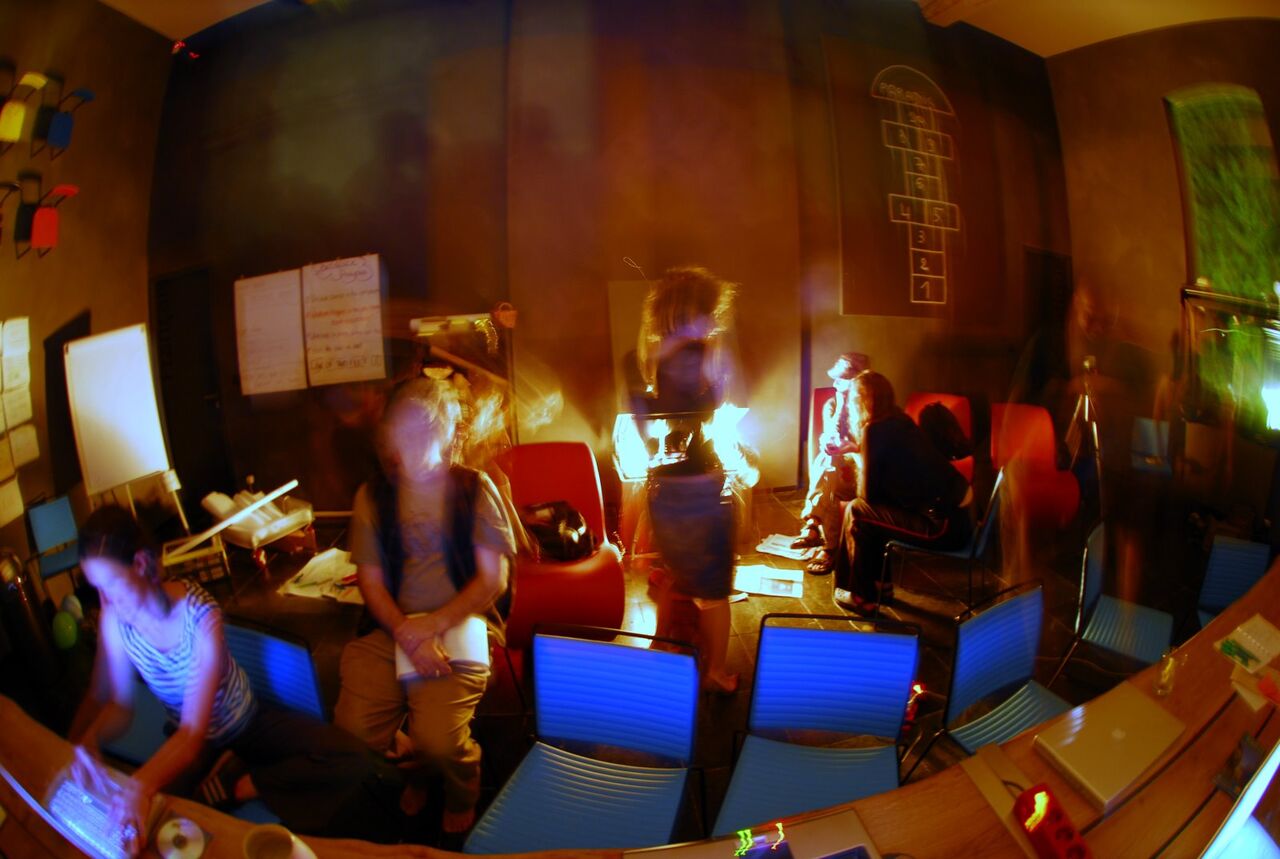
Integrated approach to complex issues
It is not possible to tackle any one of these critical issues in isolation—they all form part of the same larger problem—that we have created a fragile system. What we need are not individual remedies for the most urgent issues, but fundamental behavioural and cultural changes to society. Complex challenges cannot be solved using analytical methods alone. They require creative leaps, heuristics, trial and error, as well as public experiments to ensure the feasibility and durability of any proposals.
We propose that the current climate of industrialized destruction be countered by industrialized reseeding of the oceans. Our work particularly examines the technologies that should exist to carry out this wish. The primary idea we are researching is the construct Bio Ocean Balls (BOBs). Consisting of a mass of larvae from micro to macro sized organisms, BOBs are released into the marine environment where they melt and disperse. This influx of biodiversity into once sterile areas rapidly creates a complete ecosystem. BOBs differ from their terrestrial equivalent, seedballs, by combining the seeding of both plants and animals in one package. The matrixes used as support the growth of complex organisms and sequester nutrients involved in toxic red tide blooms.
By working with complexity in specific contexts, we may surprise ourselves by solving multiple problems, producing work with multiple benefits. This can be a slow, long and often frustrating process. We expect it will take a while to reconnect the weave.
The boundaries that separate art, science, medicine, literature, computation, engineering, and design and craft generally are not divine. These boundaries are socially generated. Research techniques are not identical, nor are results all equally valid under all circumstances; quantum physics isn’t opera. There exists a sensibility that can transcend intellectual turf war with no loss of rigour. If you choose to do it, you can step outside the boundaries history makes for you. You can walk through walls.Bruce Sterling, Viridian Design Principles
Participatory culture
One notable difference between the environmental movements in the 1970s and today is that we are beginning to understand that prescribing universal solutions and telling people what to do, doesn't work. There may be as many responses as there are problems. Active participation is more important than getting it “right”. As access to information becomes ever easier, there is a need to cut through the jungle of nonsense, building knowledge relevant to different lives and environments. Rather than the singular solution, we should be looking for ecologies of situated responses, interdependent and robust, nourished by local conditions, with trans-local ties evolving through collaboration and trust.
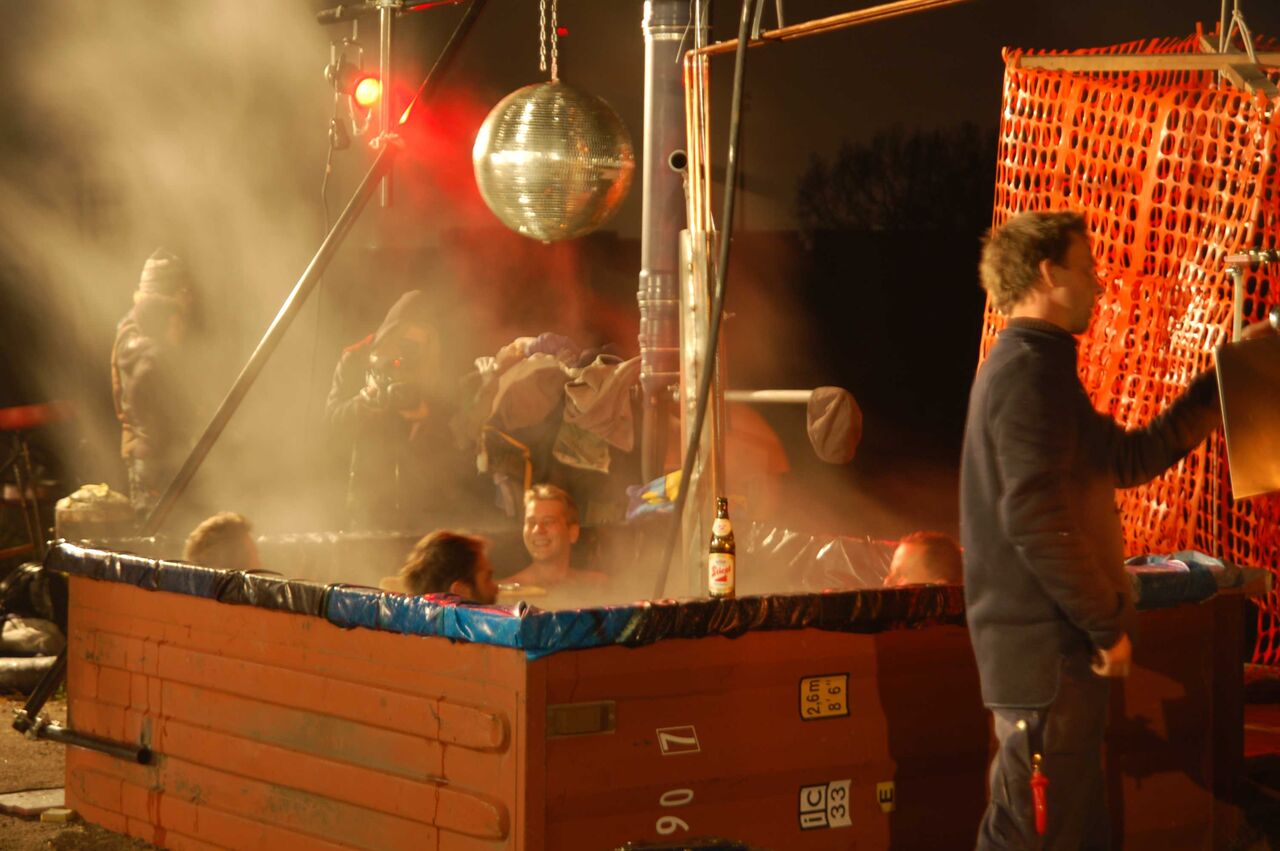
Looking inward
There is much that transdisciplinary collaborations can offer to the world, but there is also much that can make our individual practices more environmentally and ethically resonant. There is work to do to refine the material conditions in which we work—choosing non-toxic materials, using renewable energy, and considering the points of connection in our supply chains. We can look at how practice itself needs to be transformed, so that it inhabits and embodies the ideas we espouse. This requires questioning our methods, formats, and outputs, and examining the integrity of how we live our daily lives. Moving beyond critiquing and commenting on the state of the world, each of us can begin generating different realities, starting with our own workspaces, offices, studios, and living rooms.
In 1994 I started a project through a series of coincidences (or curiosity) that have something to do with the experience of the war in former Yugoslavia. That, together with a sensitivity towards environmental issues brought forth the idea of Makrolab. The challenge I confronted myself with was—how to build and operate a completely autonomous place for presenting and performing theatre in a war zone? It should be able to survive without any connections or dependence on the outside world, or to non-existent infrastructures. One of the main theses of the project is that a small group of people is living in isolation conditions, which generate more evolutionary code than larger systems. There was the ultimate goal of proving a system that can work in a hostile environment, both for humans and for technology, and to make this as a possible way to survive in future environments.
With Luminous Green, we immerse ourselves in an imaginative present to envisage possible futures. We try not to force any particular future, nor conclude with a five-point action plan. And yet, at each gathering, we started to see more clearly what we can do to become more luminous.

Luminous Green Gatherings
Luminous Green gathers diverse groups of people to re-imagine a human world that is enlightened, imaginative, electrified and—most importantly—living in a fertile symbiosis with the planet. Through conversations, experiments, friendships, and propositions we question what could exist beyond (and beneath) conservation and sustainability. The first Luminous Green gathering took place in Belgium in 2007, comprising a week-long series of events for a range of audiences. An Open Space retreat gathered participants whose practices incorporated ecological thinking as a core value. In a hands-on workshop, artists, designers, and engineers experimented with the opportunities and challenges of shrinking our ecological footprints, while maximising our cultural hand-prints. The Luminous Green Symposium zoomed in on transdisciplinary approaches to fostering change, communicating environmental concerns, and rethinking how we design (and use) physical materials. This was a more public forum, supporting serendipitous encounters between people who may not have otherwise come into contact.

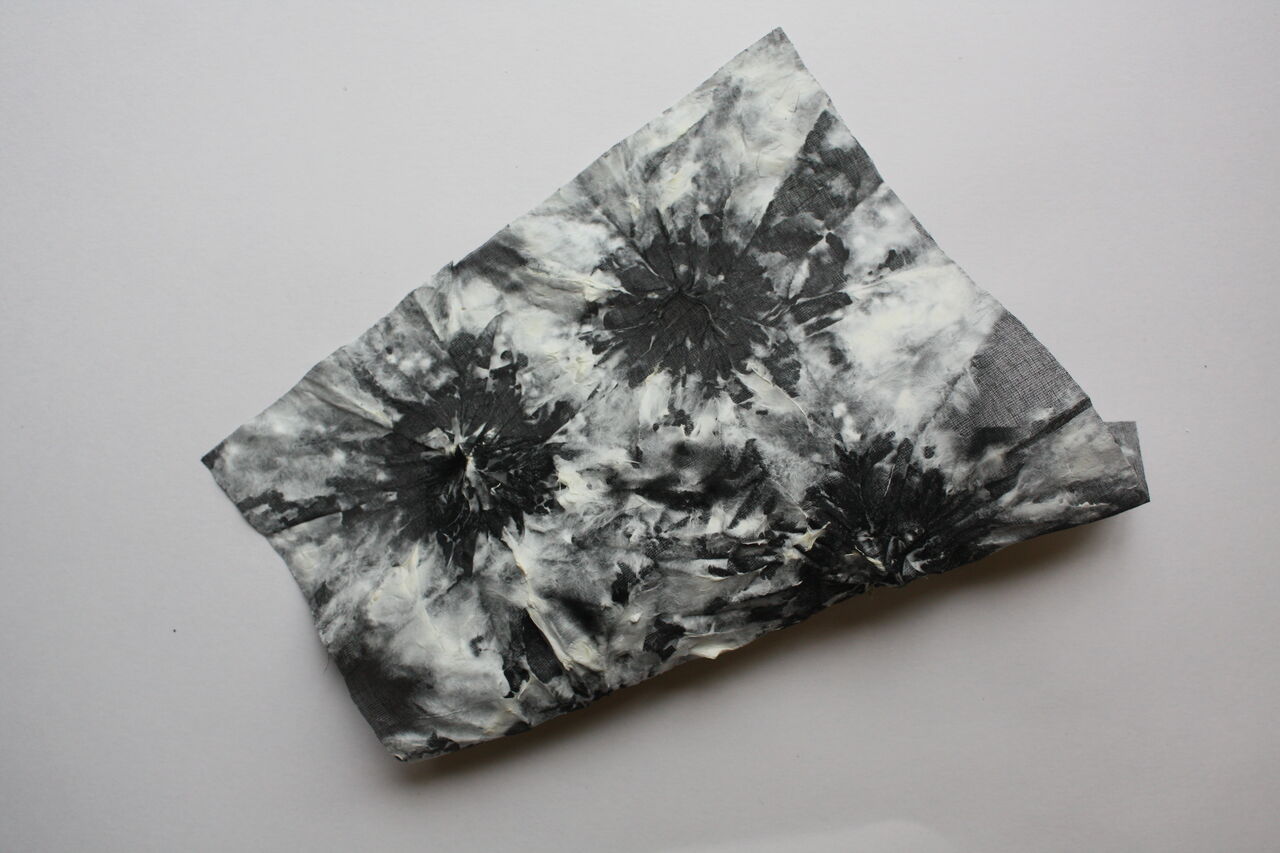
tie-grow, part of the mycelium textiles Series by Carole Collet
In the context of textiles, it is time to re-evaluate our understanding of design and market place, craft and manufacture, product lifetime and post-consumption. Designing products may well soon belong to the past as designing services becomes more relevant than ever. We also need to look ahead and collaborate across disciplines, such as material science, hi-tech engineering, biology and biomimicry to come up with successful designs. Success such as defined by balanced ecosystems in nature.
Unholy alliances of the luminous green
Could the seeds for a more “illuminated” culture be found in existing human undertakings? Could it be that the “medium” (culture, society, technology) for these seeds needs to be differently cultivated?
Nearly all tourist activities in Kyrgyzstan are in some way related to the yurt: the round, moveable nomad dwelling made of felt and wood. There are workshops on yurt construction, seminars on yurt semantics, and demonstrations in dairy production, which is traditionally the communal effort of the women in the jailoo (summer settlement). [...] To the nomads, its circular shape represents both movement and completion, and reflects their own wanderings. These wanderings weren’t linear, with some abstract destination that was never reached, but corresponded to the cyclic pattern of the seasons. [...] Apart from obvious advantages such as portability, adaptability to individual needs and tastes, resistance to harsh weather conditions, low cost…), yurts also offer practical, inexpensive, low-tech solutions to environmental issues such as space limitations, waste management, etc.. The lack of physical boundaries within yurts, their circular shape also help people to re–connect with their surroundings in this highly individualistic age.
Luminous Green seeks out motivated, curious, and open-minded people. People who care about the world, who are keen to play an active part in its evolution, are open to constructive criticism, curious about new perspectives and willing to share their knowledge and resources. Luminous Green brings these people together in an environment where they are first and foremost required to be themselves—individuals with a multitude of stories and experiences.
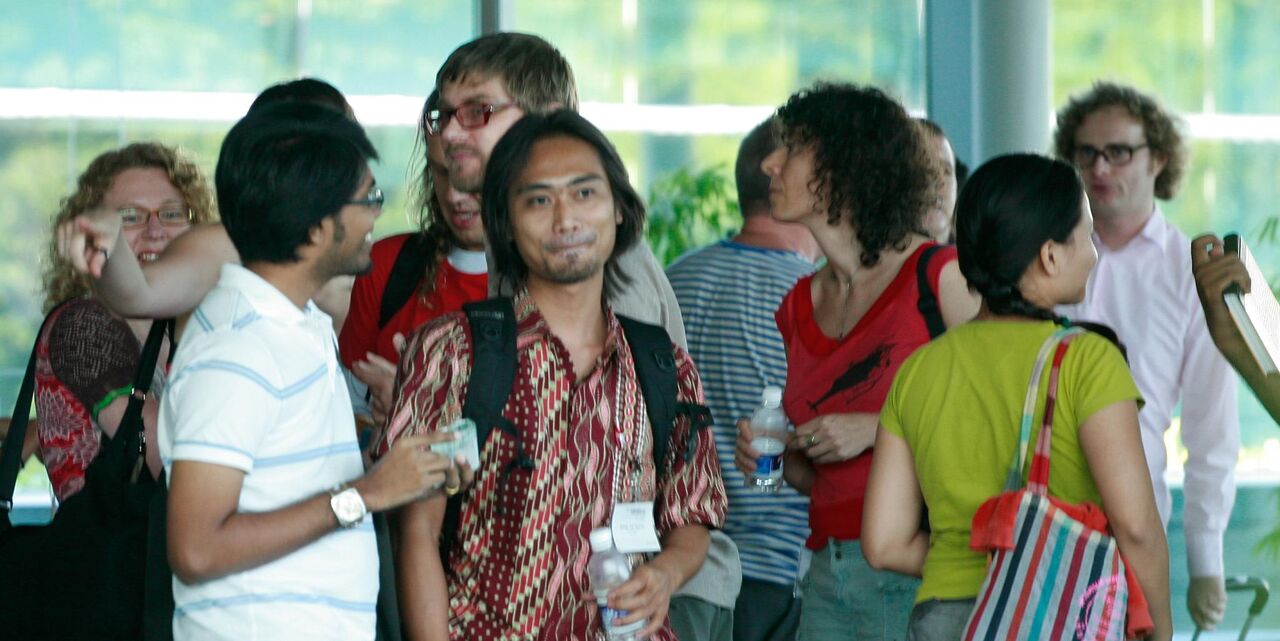
Leaving their culturally assigned roles behind, the Luminous Green participants can meet without preconceptions or affiliations. Conversations begin differently when we meet each other first as fellow human beings. We all carry a mixed bag of opinions, taboos, habits, and other curiosa, which usually remain hidden behind institutional or professional affiliations. We believe personal dialogues and engaged one-on-one conversations (leading to many-on-many conversations) can inform a wider understanding of the complexities within which we live.
Through various sessions and experiments, the participants are encouraged to share their stories, inspirations and goals, find common (and uncommon) ground, and challenge stereotypes and presumptions, in a polyphony of voices. We do not expect everyone to leave the gathering agreeing, but we hope that their interactions can contribute to a more informed and (if possible) peaceful co-existence with people of contrasting opinions.
An enlightening discussion arose at one of the gatherings, when four people (an artist, a biologist, a policy maker, and an activist) touched on the topic of genetically modified (GM) crops. In the beginning of the conversation, they assumed they would agree with each other, but as they touched upon specific cases and their complexities, the discussion brought up several opposing views which didn't fit neatly into their existing understanding of the subject matter. Because they had already connected the previous evening, they were all more willing to listen and suspend judgement. Seeing the topic in a different light and from other people's perspectives lead to a richer understanding, not just of GM crops, but of topics they had previously not known much about, such as trade relations, controlled experiments, weather patterns, or bio-art.
In another gathering, an environmental activist and a liberal economist found new perspectives on disparate issues, while talking about their common passion for mountain climbing; an artist and an engineer exchanged approaches to child rearing; a scientist and a farmer compared notes on tissue culturing. Each of these people took their new insights away with them, to foster and adapt in their diverse contexts.

I appreciated the atmosphere of the event, its textures and tones. I appreciated the encouragement of: further questions, of co-fabricating these questions, and of not necessarily needing (or having) answers.
Hosting a Luminous Green gathering
How can you foster such “unholy alliances” in a gathering of limited duration? We started by drawing on Open Space Technology, enriching the format with active storytelling techniques from alternate reality gaming, engaged dialogues, appreciative inquiry, visualisation methods from graph theory, and others, while exercising and refining our practice of being welcoming hosts.
Open Space is a hosting method meant to engage groups of people (from 5 to 5000) in discussions about particular questions or issues. While the central question or issue is included in the invitation, there is no predefined schedule; the content and format of the sessions are co-created with participants during the event. In an Open Space gathering, participants can propose to lead sessions, participate in those initiated by others, or jointly design one on the spot.
Open Space has Four Rules and One Law.
The Four Rules
- Whoever come are the right people
- Whatever happens is the only thing that could have
- Whenever it starts is the right time
- When it’s over, it’s over
The Law of Two Feet
Any time you feel that you’re not learning and not contributing, use your two feet to go somewhere where you can.
Read more about Open Space (Technology) at OpenSpaceWorld.ORG.
The most important condition of the Luminous Green gatherings is that everyone feels that they are the right people at the right place and that whatever happens, each of them is response-able for making it happen. All of those involved contribute to an environment where the “agenda” is open enough to bring burning issues to the fore, in discussions, exercises, or experiments.
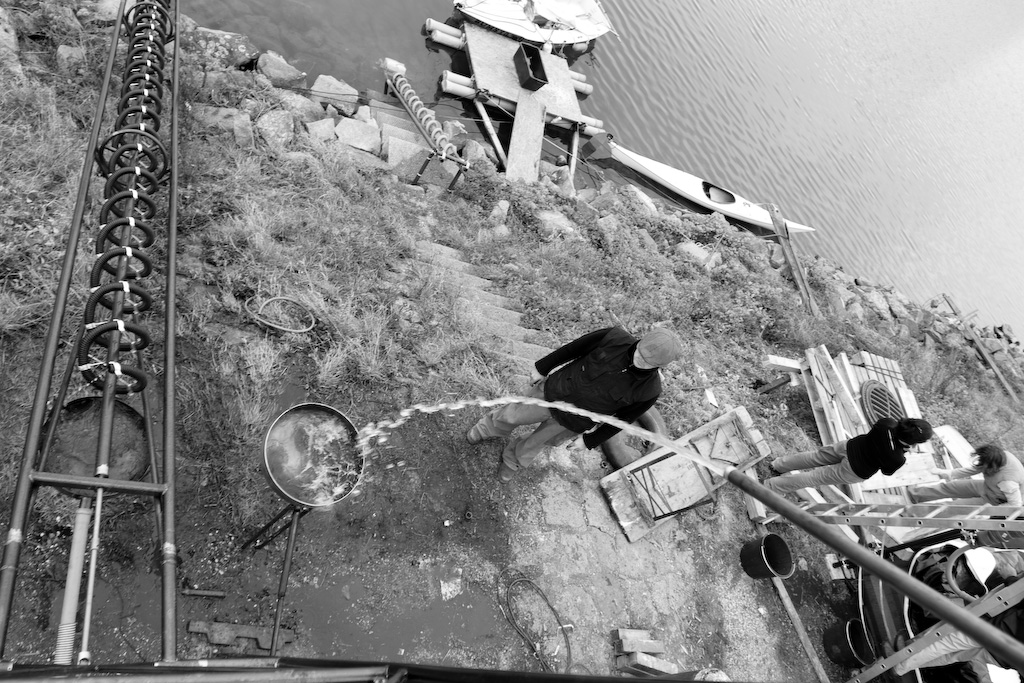
The gathering's social and aesthetic aspects are crucial, helping dissipate tensions and resolve arguments. Luminous Green is a deliberately non-confrontational environment, where dissent and play are encouraged to avoid the traps of groupthink. Sharing meals is as important as sharing ideas. Dancing, doing hand-stands, or offering massages can be interspersed with hands-on tutorials about DIY photovoltaics or theoretical sessions on topics ranging from Carbon Trading to Frugality.
A Luminous Green gathering is neither a radical environmentalist camp, nor a glitzy, self-congratulatory, green-gold business event. It is an edge habitat, like the coastline where marine and land-based ecosystems meet. Fertile and diverse, this is an often contradictory space of inconsistencies; an entangled, productive chaos, designed to provoke discussions and questions that are otherwise rarely raised.
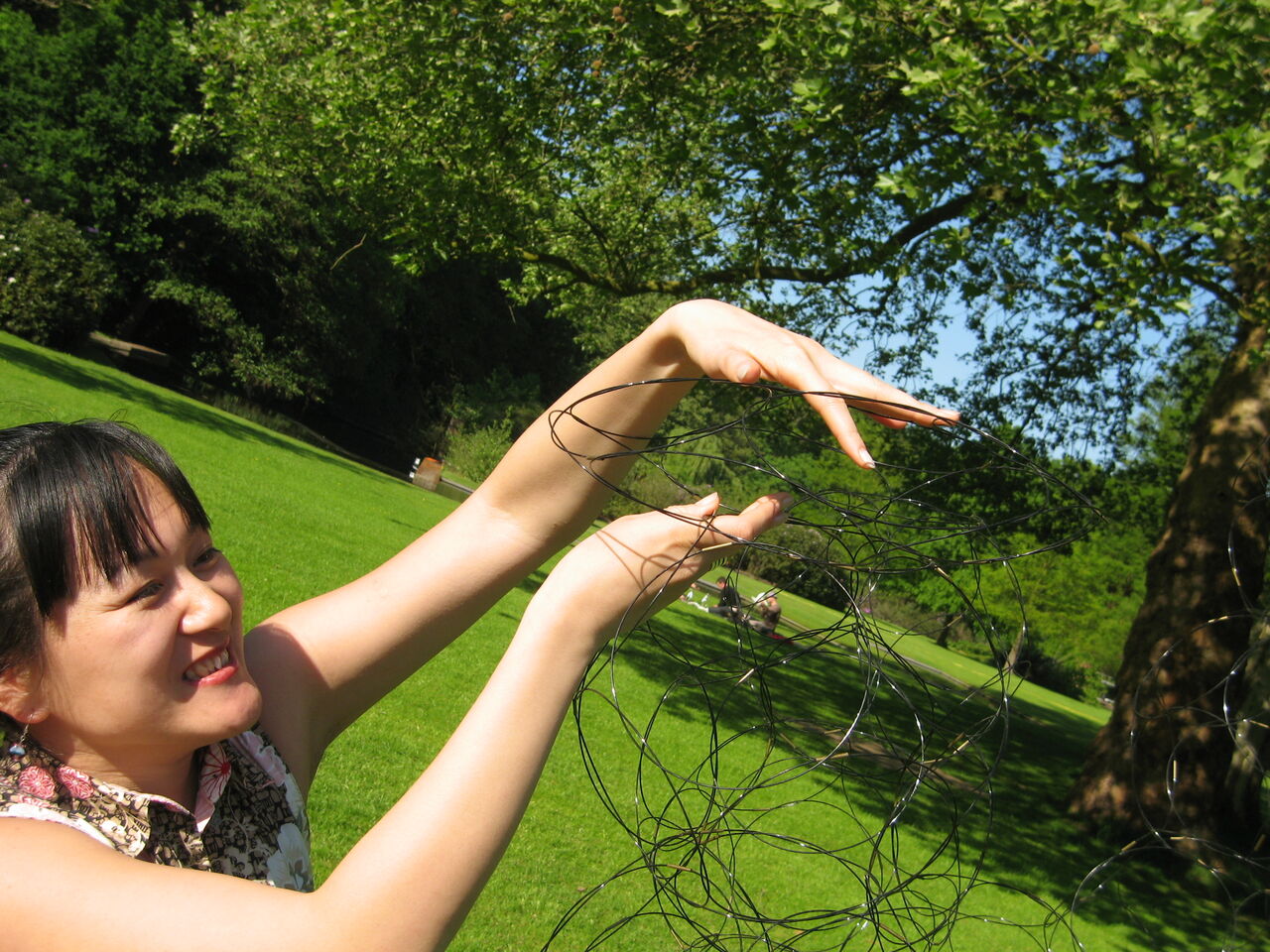
Some Luminous Green Sessions
2007 BE
Self sustaining, autonomous systems
Pasta making
Sustaining soundbytes
Hydrogen Lunchbox Laboratory
Voodoo objects
AIR session
Human generated power
EcoTech
Ecological Affect
Foamy ecosystems
Ecological games
Crafts and patterns
Solar Power Plant
Organic power
Decosystem
Future of computing
Oldskool microscopy
Spaceflight
Anticricket
Eco-engineering
Low power computing
No power media
2008 SG
Transdisciplinary collaboration
Ethical protein
Connection to light
Education strategies
Our world as a body
Making things speak for themselves
Tell your climate change story
Technological sensitivity and education
Social software to generate change
Capoeira 101
Offset scheme as cooperative
Frugality impermanence and autonomy
Luxury emissions vs survival emissions
Prismatic vision
Adaptation
I'm not into nature
Is zero no.thing
Role of the human in world ecology
Ear cleaning
Solar energy, wind energy and beyond
Sustainable tourism
Exquisite landscape 2050
Air conditioning
1st Singapore grass sitting festival
Shareism
A permanent lab
Plants as an organisational principle
2008 AT
Windmill
Rope pump
Screw Pump
Water filter
Urban hot tub
Solar oven
Urban resource walk
Peer economy
2009 USA
Luminous Green desert
Art science alliances for world changing activities
Ethical horizons
Less fragile policy and business
Social experiments to make economic and political systems less fragile
2010 BE
Space Ecologies
Rituals and Evolving Traditions
How to Deal with an Identity Crisis and Become Luminous
Poetry of Witness –Against Forgetting
Grassroots Education
System Maps
Urban Plantations
A Luminous Green Village
Biomimicry – what models in nature can become our teachers
Networking for Personal Resilience
How do We Build Resilient Luminous Green Online Communities?
Friction / Lubricants & TV
Herb herds, bunny beans, photons & power plants
Sense & Sensuality
Edible Landscape in Your Pocket
Soylently green
Luminous Green creates temporary points of exchange where possible futures can be explored, examined, and critiqued. Luminous Green gatherings are envisaged as complete experiences, stimulating participants' senses, thoughts, and emotions. We hope the experience can make a lasting impression—whether through a new collaboration, thought-provoking insights, an exciting relationship, or something none of us could have expected. While we cannot guarantee such outcomes, we do believe that a carefully prepared context, an inspiring setting, and a welcoming group of people can make a difference.

The end of the world as we know it is not the end of the world.
❧
Further Reading & references can be found in the bibliography.